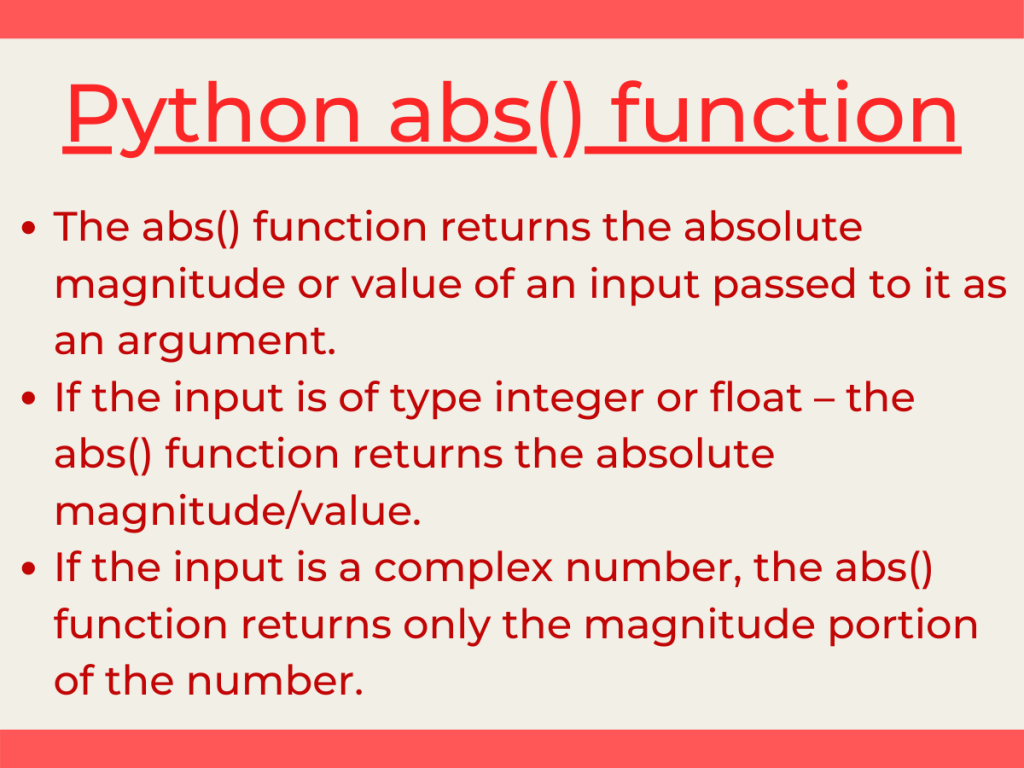Hey, folks! In this article, we will be unveiling Python abs() function with different modules such as NumPy and Pandas.
Getting started with Python abs() function
Python has a huge number of in-built functions to deal with mathematical and statistical operations. One such function is the Python abs() function.
The abs() function returns the absolute magnitude or value of input passed to it as an argument. It returns the actual value of input without taking the sign into consideration.
The abs() function accepts only a single arguement that has to be a number and it returns the absolute magnitude of the number.
- If the input is of type
integerorfloat– the abs() function returns the absolute magnitude/value - If the input is a
complex number, the abs() function returns only the magnitude portion of the number
Syntax:
abs(number)
- The number can be of integer type, floating point type or a complex number.
Example:
num = -25.78
print("Absolute value:",abs(num))
Output:
Absolute value: 25.78
Pandas DataFrame.abs() function
Python Pandas module has in-built DataFrame.abs() function to calculate the absolute value of all the data values present in a particular data variable/column of a data frame of a data set.
Syntax:
DataFrame['column_name'].abs()
Input Dataset:

Example:
import pandas as pd
import numpy as np
data = pd.read_csv("C:/marketing_tr.csv")
data.head(10)
data['cons.conf.idx'].abs()
In the above snippet of code, we have used pandas.read_csv() function to import and load the dataset into the environment. The DataFrame.head(n) function actually represents the first ‘n’ values of the dataset.
Further, we have found out the absolute values of the column ‘cons.conf.idx‘ using the abs() function.
Output:
0 42.0
1 42.7
2 36.4
3 42.7
4 46.2
...
7409 36.4
7410 42.7
7411 46.2
7412 42.0
7413 36.4
Name: cons.conf.idx, Length: 7414, dtype: float64
Python numpy.absolute() function
Python NumPy module has numpy.absolute() function to fetch the absolute values of array elements passed to it.
Syntax:
numpy.absolute(array)
Example:
import numpy as np
arr = [10, -20, 30, -40]
abs_res = np.absolute(arr)
print("The absolute values of the array elements:",abs_res)
Output:
The absolute values of the array elements: [10 20 30 40]
Conclusion
Thus, in this article, we have understood the implementation of Python abs() function with NumPy and Pandas module.
References
- Python abs() function — Official Documentation
- Python abs() function — JournalDev
